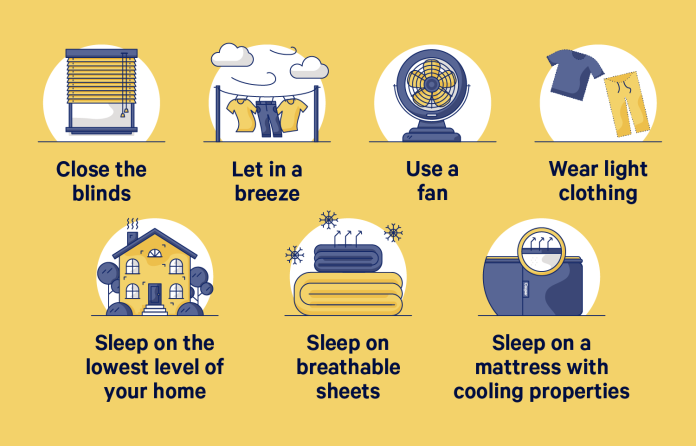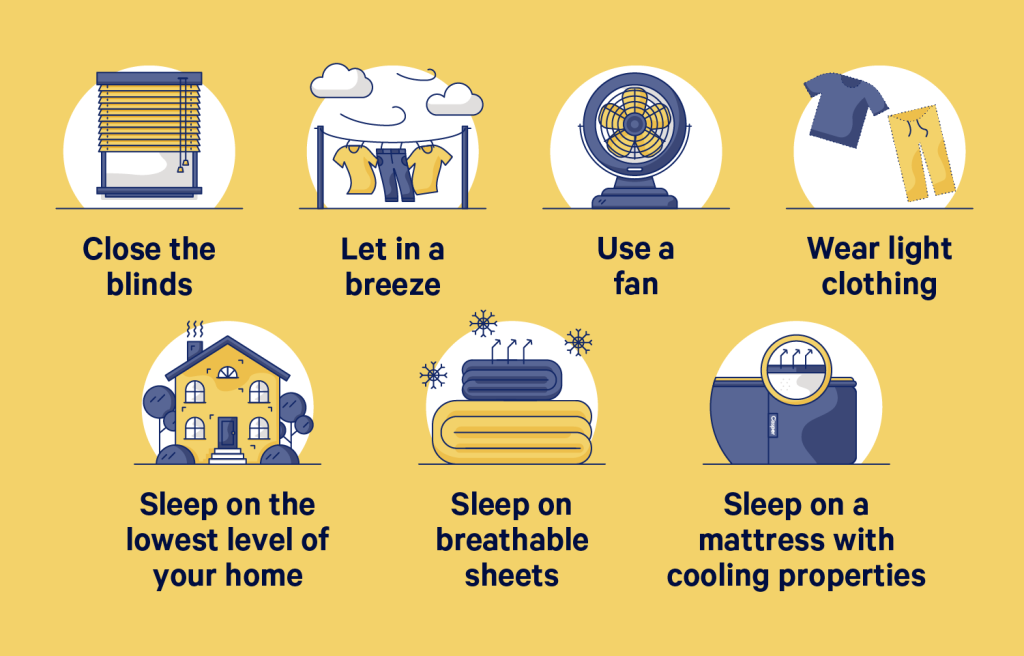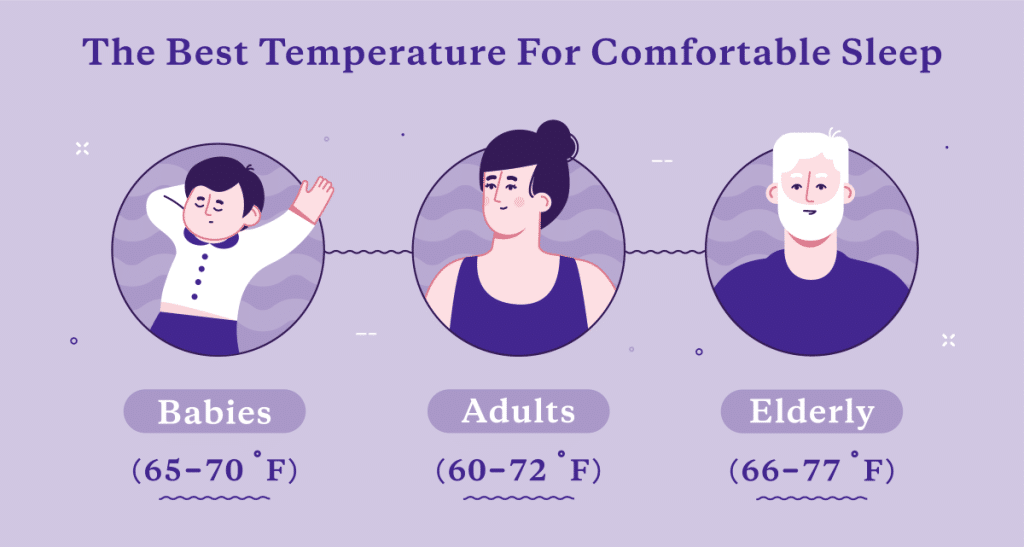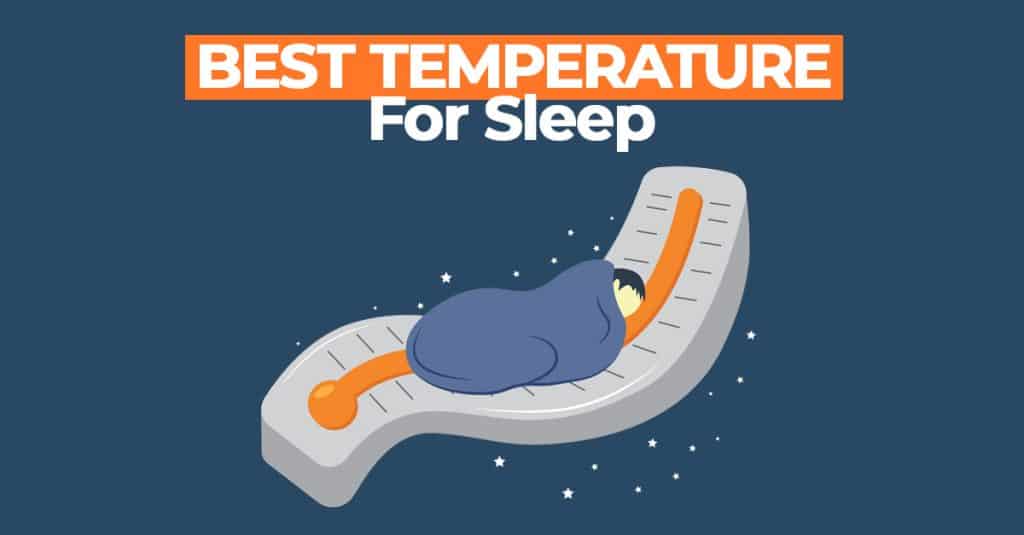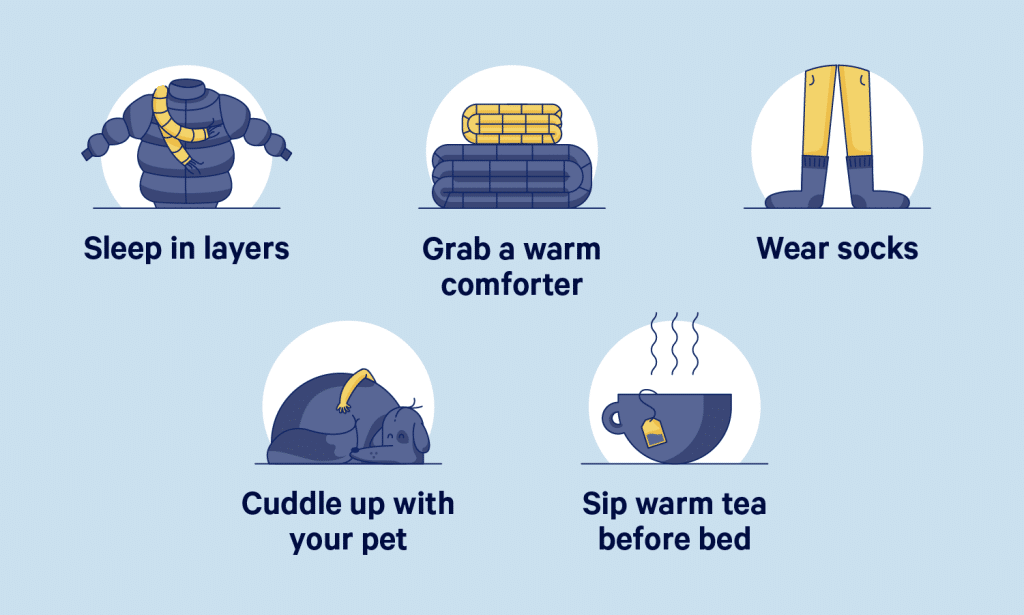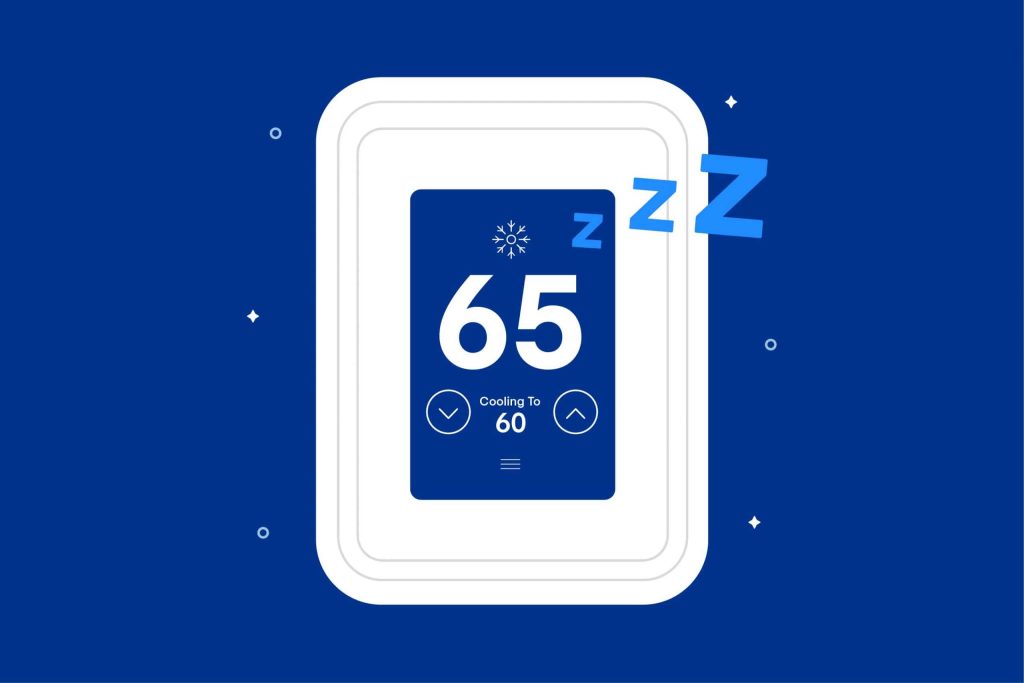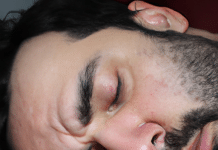Finding the perfect temperature for a good night’s sleep can be a real challenge. We all know the struggle of tossing and turning, trying to get comfortable, but never quite finding the right temperature. In this article, we explore the science behind the ideal sleep temperature and provide insights into how it can affect the quality of our slumber. Get ready to uncover the secrets to a restful sleep by understanding the importance of temperature in our bedroom.
Review contents
Factors Affecting Sleep Temperature
Individual Preferences
When it comes to sleep temperature, individual preferences play a significant role in determining what feels most comfortable. Some of us may find it easier to fall asleep and stay asleep in cooler temperatures, while others may prefer a slightly warmer environment. It is essential to consider what feels most comfortable for the majority of sleepers in a shared space to ensure a restful night for everyone.
Circadian Rhythm
Our bodies naturally follow a 24-hour cycle known as the circadian rhythm, which regulates various biological processes, including sleep. The circadian rhythm influences our body temperature, with a slight decrease occurring in the evening to help prepare us for sleep. By keeping our sleep environment within the appropriate temperature range, we can support our circadian rhythm and promote a smooth transition into sleep.
Room Conditions
The conditions within our sleep environment can also impact our sleep temperature. Factors such as room size, insulation, windows, and proximity to external sources of heat or cold can affect the overall temperature within the room. It is important to consider these factors and make any necessary adjustments, such as using curtains to block out sunlight or using a fan or space heater to regulate the temperature.
Health Conditions
Certain health conditions may affect our sensitivity to temperature while sleeping. For instance, individuals with conditions such as menopause or hot flashes may find it more difficult to sleep in warmer temperatures due to increased body heat. On the other hand, those with conditions like Raynaud’s disease may struggle with colder temperatures. It is essential to consult with a healthcare professional to understand how specific health conditions may impact your sleep temperature needs.
Recommended Temperature Range for Sleep
National Sleep Foundation Guidelines
The National Sleep Foundation provides guidelines for the recommended temperature range for optimal sleep. According to their research, a temperature range of 60 to 67 degrees Fahrenheit (15 to 19 degrees Celsius) is ideal for most individuals. This range is believed to provide a sleep environment that promotes comfort and helps facilitate the physiological processes necessary for quality sleep.
Ideal Bedroom Temperature
In addition to the National Sleep Foundation’s guidelines, it is important to consider individual preferences when determining the ideal bedroom temperature. Some individuals may find that they sleep best at the lower end of the recommended range, while others may prefer a slightly warmer temperature. It is crucial to find the temperature that feels most comfortable and conducive to quality sleep.
Variation Based on Personal Factors
While the recommended temperature range provides a helpful starting point, it is important to note that personal factors can influence our sleep temperature needs. Factors such as age, gender, metabolism, and overall health can impact how we perceive and regulate temperature. By recognizing our individual differences and making adjustments based on our specific needs, we can optimize our sleep environment for better rest.
This image is property of images.ctfassets.net.
Effects of Cold Temperature on Sleep
Benefits of Sleeping in Cooler Temperature
Sleeping in a cooler temperature can offer several benefits. One of the primary benefits is the promotion of deeper sleep. Cooler temperatures signal to the body that it is time to rest, facilitating the release of sleep hormones and helping to regulate body temperature. Additionally, cooler temperatures can prevent night sweats, leading to a more comfortable and uninterrupted night’s sleep.
Promotion of Deeper Sleep
When our bodies are exposed to cooler temperatures during sleep, it triggers a natural process known as thermoregulation. This process helps the body achieve and maintain a state of deep sleep, characterized by slower brain waves and reduced muscle activity. By creating a cooler sleep environment, we can encourage this process and enjoy the benefits of a more restorative sleep.
Prevention of Night Sweats
Night sweats can be disruptive and uncomfortable, often leading to sleep disturbances. Sleeping in a cooler temperature can help reduce the occurrence of night sweats, as cooler environments help regulate body temperature and prevent excessive sweating. By avoiding the discomfort and disturbances caused by night sweats, we can improve the quality of our sleep and wake up feeling more refreshed.
Effects of Warm Temperature on Sleep
Benefits of Sleeping in Warmer Temperature
While cooler temperatures are generally recommended for optimal sleep, sleeping in a warmer temperature can also have its benefits. One of the primary advantages is relaxation and comfort. Warmer temperatures can create a cozy and soothing environment, promoting feelings of relaxation and enhancing our overall sleep experience. Additionally, warmer temperatures can facilitate falling asleep faster, as the body may perceive a warmer environment as more conducive to rest.
Relaxation and Comfort
Warm temperatures can create a pleasant and cozy sleep environment that promotes relaxation and comfort. Just like a warm hug, the warmth envelops the body, helping to relieve tension and induce a sense of calmness. This can be particularly beneficial for individuals who struggle with stress or anxiety, as a warm sleep environment can provide a soothing and nurturing atmosphere.
Facilitation of Falling Asleep
A slightly warmer sleep environment can help facilitate falling asleep faster. When we feel warm and comfortable, it signals to our bodies that it is time to rest. This can help reduce the time it takes for us to fall asleep, promoting a quicker onset of sleep and potentially improving overall sleep efficiency. For individuals who have difficulty falling asleep, adjusting the sleep temperature to a slightly warmer setting may be worth considering.
This image is property of assets.purple.com.
Negative Impact of Extreme Temperatures
Cold Room Temperatures
While cooler temperatures can be beneficial for sleep, extreme cold room temperatures can have negative effects. Sleeping in excessively cold temperatures can lead to discomfort, shivering, and difficulty maintaining a deep and restful sleep. It is crucial to find a balance between creating a cool sleep environment and preventing temperatures from dropping too low, which may compromise sleep quality.
Warm Room Temperatures
Similarly, extreme warm room temperatures can also disrupt sleep and negatively impact sleep quality. Sleeping in excessively warm temperatures can lead to excessive sweating, restlessness, and difficulty achieving deep sleep. It is important to avoid overheating the sleep environment and strive for a comfortable and moderate temperature that promotes restful sleep.
Sleep Deprivation and Sleep Quality
Both excessively cold and warm temperatures can contribute to sleep deprivation and poor sleep quality. When the sleep environment does not provide the right temperature for restful sleep, it can lead to frequent awakenings, difficulty falling back asleep, and overall sleep disturbances. Sleep deprivation and poor sleep quality can have detrimental effects on our physical and mental well-being, emphasizing the significance of maintaining an optimal sleep temperature.
Factors to Consider in Adjusting Sleep Temperature
Seasonal Changes
As seasons change, so do the environmental temperatures. It is essential to consider these seasonal changes when adjusting sleep temperature. During colder months, adjusting the thermostat or incorporating additional blankets or thicker bedding may be necessary to maintain a comfortable sleep environment. In warmer months, utilizing fans, air conditioning, or lighter bedding materials can help regulate the temperature and promote better sleep.
Bedding Materials
The choice of bedding materials also plays a role in regulating sleep temperature. Certain materials, such as cotton and bamboo, are known for their breathability and moisture-wicking properties, helping to keep the body cool and comfortable. On the other hand, materials like fleece and flannel can provide warmth and insulation during colder months. Understanding the properties of different bedding materials and selecting the appropriate ones can contribute to achieving the desired sleep temperature.
Thermostat Control and Technology
Advancements in technology have made it easier than ever to control and regulate sleep temperature. Programmable thermostats, smart home devices, and wearable sleep trackers can provide valuable insights and automate temperature adjustments based on individual preferences and sleep patterns. By utilizing these tools, we can ensure our sleep temperature remains consistent and optimal throughout the night.
This image is property of www.sleepadvisor.org.
Tips for Achieving Optimal Sleep Temperature
Experiment and Find the Ideal Temperature
One of the best ways to determine the ideal sleep temperature is through experimentation. Start by following the recommended temperature range and then make small adjustments based on personal preferences. Pay attention to how you feel upon waking up and throughout the day to gauge the effectiveness of different temperature settings. By experimenting and fine-tuning, you can discover the perfect sleep temperature that promotes quality rest.
Bedroom Environment Adjustments
In addition to adjusting the thermostat, there are several other modifications you can make to create an optimal sleep environment. Keep your bedroom well-ventilated by opening windows or using fans to circulate air. Invest in blackout curtains or blinds to block out excess light that may contribute to increased temperatures. Remove any electronic devices or appliances that emit heat. These small adjustments can help create a sleep environment that is conducive to the desired sleep temperature.
Use of Cooling or Heating Devices
If adjusting the thermostat alone is not sufficient, consider incorporating cooling or heating devices into your sleep routine. For cooler temperatures, consider using a fan, air conditioner, or even a cooling mattress pad to regulate the sleep environment. If you prefer a warmer sleep temperature, an electric blanket or a heating pad can provide the necessary warmth. These devices can be used in conjunction with thermostat adjustments to achieve the desired sleep temperature.
Alternative Approaches to Regulate Sleep Temperature
Adjusting Clothing Layers
Another effective way to regulate sleep temperature is by adjusting the layers of clothing worn during sleep. Opting for breathable and lightweight fabrics in warm temperatures can help prevent overheating and excessive sweating. In colder temperatures, layering clothing or wearing thermal pajamas can provide added insulation and warmth. By adapting your sleepwear to the surrounding temperature, you can optimize sleep comfort.
Using Natural Bedding Materials
Natural bedding materials, such as cotton, bamboo, or wool, offer breathability and moisture-wicking properties that can help regulate sleep temperature naturally. These materials allow air to circulate and prevent the buildup of heat and moisture, creating a cool and comfortable sleep environment. Investing in bedding made from natural materials can significantly contribute to achieving the desired sleep temperature.
Incorporating Essential Oils
Certain essential oils have properties that can influence sleep temperature regulation. Lavender, chamomile, and eucalyptus oils are known for their calming and cooling effects, which can help lower the body’s temperature during sleep. These oils can be diffused in the bedroom or applied topically to pulse points before bedtime. By incorporating essential oils into your sleep routine, you can enhance the overall sleep experience and promote a more comfortable temperature.
This image is property of images.ctfassets.net.
The Role of Personal Preference
Listening to Your Body
While guidelines and recommendations provide a helpful starting point, it is crucial to listen to your body’s cues when it comes to sleep temperature. Pay attention to how you feel during and after sleep and adjust accordingly. If you consistently wake up feeling too hot or too cold, it may be a sign that the sleep temperature needs to be adjusted. Trusting your body’s signals can help you find the optimal sleep temperature for your individual needs.
Customizing Sleep Environment
Creating a sleep environment tailored to your preferences is key to achieving the optimal sleep temperature. Consider factors such as bedding materials, room ventilation, lighting, and noise levels to personalize your sleep environment. By customizing these elements, you can create a space that promotes relaxation and comfort, ultimately enhancing your sleep quality.
Trial and Adaptation Period
It is important to recognize that finding the ideal sleep temperature may require some trial and error. Adjusting to new temperature settings may take time, and it is normal to experience a period of adaptation. Give yourself time to acclimate to any changes you make and be patient as you find what works best for you. Remember, achieving optimal sleep temperature is a journey, and with persistence, you can create a sleep environment that supports restful sleep.
Conclusion
Finding the best temperature for sleep is a personal journey that involves considering individual preferences, circadian rhythm, room conditions, and health factors. While the recommended temperature range provides a helpful guideline, it is important to make adjustments based on personal needs and preferences. Whether you prefer a cooler environment for deeper sleep or a warmer atmosphere for relaxation, the goal is to create a sleep environment that promotes restful sleep and enhances overall well-being. By paying attention to your body’s signals, customizing your sleep environment, and incorporating various strategies, you can achieve the optimal sleep temperature that helps you wake up feeling rejuvenated and ready to take on the day. So, go ahead and create your perfect sleep sanctuary, where comfort and tranquility await you every night.
This image is property of amerisleep.com.

